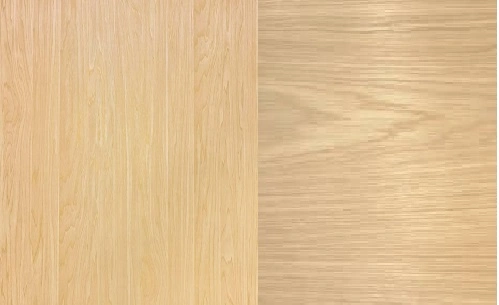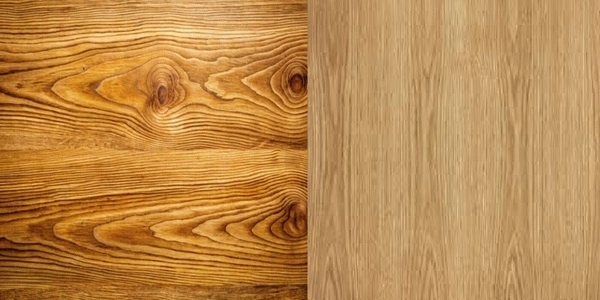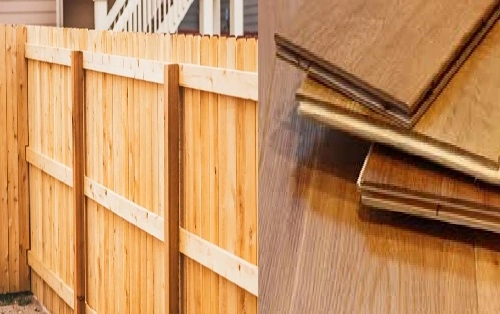When selecting hardwood for furniture, cabinetry, or flooring, maple and oak are two of the most popular choices. Both are durable, versatile, and beautiful woods, but they differ significantly in terms of appearance, workability, cost, and best applications. Choosing between maple and oak depends on your specific needs, design preferences, and budget.
This article provides an in-depth comparison of maple wood and oak, exploring their characteristics, advantages, disadvantages, and ideal uses to help you make the best decision for your project.
What is Maple Wood?
Maple wood comes from maple trees, including hard maple (Acer saccharum) and soft maple (Acer rubrum). Hard maple, often referred to as sugar maple, is the most commonly used variety due to its strength and density.
Key Characteristics of Maple Wood:
- Appearance: Maple wood is light in color, ranging from creamy white to pale brown, with occasional reddish or gray streaks. Its grain is fine, uniform, and smooth.
- Durability: Hard maple is extremely durable and resistant to wear and tear, making it ideal for high-traffic applications.
- Workability: Maple can be more challenging to work with due to its density but finishes beautifully when properly treated.
- Cost: Moderately priced, maple wood offers excellent value for its durability and appearance.
What is Oak Wood?
Oak wood comes from oak trees, with red oak (Quercus rubra) and white oak (Quercus alba) being the most common types used in woodworking. Oak is valued for its strength, distinct grain patterns, and long-lasting appeal.
Key Characteristics of Oak Wood:
- Appearance: Oak wood features a pronounced grain pattern, giving it a classic and rustic look. Red oak has a warm reddish tone, while white oak is lighter, with golden or gray undertones.
- Durability: Oak is incredibly strong, with excellent resistance to wear, making it suitable for furniture and flooring.
- Workability: Oak is easy to work with, though its open grain may require more sanding for a smooth finish.
- Cost: Oak is widely available and moderately priced, with white oak being slightly more expensive than red oak.
Comparison of Maple Wood and Oak
| Feature | Maple Wood | Oak Wood |
|---|---|---|
| Color | Light cream to pale brown; occasional streaks | Reddish-brown (red oak); golden-gray (white oak) |
| Grain | Fine, smooth, and uniform | Open, pronounced grain; distinct texture |
| Durability | Hard, dense, and wear-resistant | Highly durable; excellent for heavy use |
| Workability | Dense and harder to cut or machine | Easy to work with; open grain requires sanding |
| Staining | May stain unevenly without conditioner | Absorbs stain well, enhances grain pattern |
| Cost | Moderately priced | Comparable to maple; white oak is slightly pricier |
| Best Uses | Flooring, butcher blocks, modern furniture | Flooring, cabinetry, traditional furniture |
Advantages of Maple Wood
- Durability: Hard maple is one of the most durable hardwoods, making it ideal for high-use areas like floors, countertops, and dining tables.
- Light Color: Its pale tones work well in modern and contemporary designs, offering a sleek, minimalist aesthetic.
- Smooth Grain: The fine, consistent grain provides a clean look, making maple ideal for painted or stained finishes.
- Affordability: While considered a premium hardwood, maple is moderately priced compared to some exotic woods.
Drawbacks of Maple Wood:
- Staining Challenges: Maple absorbs stain unevenly, often requiring a wood conditioner for consistent results.
- Hard to Work With: Its density makes it more difficult to cut and machine, particularly for intricate designs.
Advantages of Oak Wood
- Classic Appearance: Oak’s pronounced grain pattern and warm tones create a timeless, rustic look that suits traditional and farmhouse styles.
- Versatility: Oak is available in red and white varieties, offering flexibility in color and texture for different applications.
- Easy to Stain: Oak takes stain exceptionally well, enhancing its grain and allowing for a wide range of finishes.
- High Durability: Oak’s strength makes it a top choice for furniture, flooring, and structural elements.
Drawbacks of Oak Wood:
- Open Grain: The prominent grain pattern can make oak feel less refined than smoother woods like maple.
- Heavier Weight: Oak is heavier than maple, which can make it more challenging to handle during construction.
Best Uses for Maple Wood
- Modern Furniture:
- Maple’s smooth grain and light color are perfect for sleek, minimalist designs.
- Flooring:
- Hard maple is a popular choice for hardwood floors, especially in high-traffic areas.
- Butcher Blocks and Countertops:
- Maple’s density and resistance to wear make it ideal for kitchen applications.
- Cabinetry:
- Its smooth finish works well for painted or stained cabinets.
Best Uses for Oak Wood
- Traditional Furniture:
- Oak’s classic grain and warm tones make it a staple for dining tables, chairs, and storage pieces.
- Flooring:
- Oak is a top choice for hardwood floors, with both red and white oak providing durability and style.
- Cabinetry:
- Oak cabinets offer a timeless, rustic charm, especially in kitchens and bathrooms.
- Decorative Millwork:
- Oak’s strength and grain make it ideal for trim, moldings, and paneling.
Cost Comparison
- Maple Wood:
- Costs range from $5 to $8 per board foot, with hard maple being more expensive than soft maple.
- Oak Wood:
- Red oak typically costs $4 to $7 per board foot, while white oak is slightly pricier at $6 to $9 per board foot.
Which Should You Choose?
Your choice between maple and oak will depend on your project’s requirements and your aesthetic preferences:
- Choose Maple If:
- You want a sleek, modern look with a smooth, fine grain.
- Durability is a top priority, particularly for flooring or countertops.
- You’re working within a budget but still want a high-quality hardwood.
- Choose Oak If:
- You prefer a traditional or rustic appearance with a pronounced grain.
- You need a wood that stains easily and enhances its natural texture.
- You’re creating furniture or flooring with a timeless, classic appeal.
Conclusion
Both maple and oak are excellent choices for hardwood projects, offering durability, beauty, and versatility. Maple’s light color and fine grain make it ideal for contemporary and minimalist designs, while oak’s rich tones and bold grain suit traditional and rustic styles.
When deciding between the two, consider your budget, design preferences, and the intended use of the wood. Whether you choose the smooth elegance of maple or the classic charm of oak, either hardwood will provide a lasting, beautiful addition to your home


